Staging Grand Park’s biggest act yet
August 28, 2014
The pink furniture is being packed off to storage. The splash pad is disappearing under a protective mat. The street closure notices have been circulating for a week and a security detail of more than 1,000 has been assembled.
With Grand Park scheduled to welcome its biggest crowd yet this Labor Day weekend, local authorities have mustered a similarly impressive response to gear up for Budweiser Made In America, the two-day downtown music festival being curated by Jay Z and promoted by Live Nation.
“There are a lot of headline acts and they’re expecting more than 30,000 people each day,” explained Christine Frias, a program manager in the county CEO’s office who is coordinating the departments involved in the deployment.
“I think, with the help of Grand Park, the Sheriff’s Department and all the collaboration that’s going on, this event will be successful. “
Still, she notes, “you have to take extra precautions when there’s going to be alcohol.”
Preparations for the August 30-31 festival have been the talk of the town since April, when Jay Z and Los Angeles Mayor Eric Garcetti announced that the bicoastal music festival would be held this year in downtown’s most popular new park.
Though Grand Park has seen some grand crowds—about 20,000 gathered there for its first New Year’s Eve bash, for instance—they have mostly been free to the public and explicitly family friendly.
And peaceful: Frias said the more than 10,000 people who gathered there for July 4 music and fireworks were so well behaved that none of the park’s plants or furnishings had to be replaced.
But the Budweiser MIA concert is the first attempt to use the 12-acre space as a venue for a major ticketed rock concert, and—though neither Jay Z nor his superstar wife, Beyoncé are among the acts on the lineup—this event is expected to be a doozy, with Kanye West, John Mayer and other big names on the roster. More than 30 bands are expected to play over the festival’s two days.
Three stages, an amusement park ride and an exhibition skate park will dot the lawns between City Hall and the Music Center, and 40 to 50 food trucks will ring the venue. And while all ages will be welcomed, the festival site will allow beer drinking at more than a half-dozen public and VIP beer gardens.
“It’s going to be a couple of long hot days, and hopefully people will mostly consume water, but we are concerned about alcohol consumption,” said Los Angeles Sheriff’s Capt. Chuck Stringham.
About 270 sheriff’s deputies and a similar number of Los Angeles police are expected to be deployed on each day of the festival, along with several dozen Music Center security officers and an unknown number of undercover officers who will be enforcing laws against underage drinking for the state Department of Alcoholic Beverage Control.
Another 370 private licensed security guards are expected to be on hand at the behest of the acts themselves and the concert promoter, according to a spokeswoman from Garcetti’s office. The Sheriff’s Department will handle security within the event perimeter and LAPD will be in charge outside.
Alcohol will be permitted only in the beer gardens, and patrons will be limited to two beers at a time and required to produce valid photo I.D.s, he said, adding that attendees will not be allowed to exit and re-enter the venue.
Frias said the park itself will be braced for the masses. Grand Park is owned by the county and operated by the Music Center, although the surrounding streets are mostly the jurisdiction of the City of Los Angeles. Live Nation is paying $500,000 to the city to cover its costs and $600,000 to the Music Center to cover park rental and county services.
But the promoters must pay extra for any damage, and more than 300 workers per day have been on the site this week, spending an average of 15 hours a day to assemble about 100 tractor trailers’ worth of equipment, according to a spokesman for Live Nation.
Videographers have been filming the lush grounds all week, she said, to establish the park’s pre-festival condition, and the park’s signature hot pink furniture has been stored for safekeeping.
Vulnerable landscaping is being cordoned off with temporary fencing. And, she said, the splash pad around the Arthur J. Will Memorial Fountain also is getting a custom buffer to protect it from a stage that is being installed over it for the festival deejays.
“The splash pad will be turned off and dried, and then they’re putting a 4- to 5-inch rubberized mat on it to cover it and distribute the weight of the equipment on top of it,” said Frias.
Outside the Lines, the construction firm that helped build the splash pad, will oversee the construction to ensure that none of the festival preparations damages the water feature or surrounding tile and LED lights, she said.
Perhaps the trickiest set of preparations is for festival traffic. Already, various downtown streets have been closed this week for delivery of production equipment and stages. (Most of the work has gone on overnight).
Though ticket sales are not as high as the initial daily estimates of 50,000, the crowds are still expected to set records for Grand Park, and organizers have spent months reassuring downtown residents and business owners that the area won’t be inundated.
“But we’ve had major closures in the downtown area before—we know how to do this,” said Aram Sahakian, who oversees special traffic operations for the city Department of Transportation.
On the Fourth of July, for instance, he noted, thousands cars were swiftly ushered in and out of downtown parking structures by traffic control officers who patrolled the park area on foot and on Segways.
“And how about Fiesta Broadway? That used to bring in hundreds of thousands of people,” Sahakian said.
Organizers are urging concertgoers to take public transportation, Sahakian said, and between 7,000 and 10,000 are expected to ride mass transit into the venue. But the Civic Center station—which opens directly into Grand Park—will be closed so that riders can’t bypass the ticket-takers, and to accommodate safety concerns.
Though the Civic Center station does have a second entrance outside the perimeter of the festival, event organizers and law enforcement insisted that the whole station be closed because the bottleneck that would have resulted from channeling thousands of riders at one time into one exit might have overcrowded the platform and created a safety hazard, said Metro spokesman Marc Littman.
So subway riders are being urged to get off at Pershing Square or Union Station and walk the few blocks to the venue.
Meanwhile, Sahakian said, those who drive will be directed to downtown parking garages, though some may have to park as far from the venue as Staples Center or Dodger Stadium, and ride in on shuttles. Extra traffic engineers and traffic control officers will be on hand to help channel traffic toward open parking structures, he said.
“Yes, this is a first time thing for the park, but we’re prepared,” he said. “Hey, we moved the Space Shuttle, right?”

Budweiser Made in America curator Jay Z performing earlier this year with event headliner Kanye West.
Posted 8/28/14
Opera’s beach blanket bravura
August 27, 2014
It’s not every day that the sublime vocal talents of Plácido Domingo share a place in the sun with funnel cakes, caricature artists and an iconic ocean-front Ferris wheel.
But the tourist-friendly charms of the Santa Monica Pier will be meeting the glories of opera at its grandest when LA Opera brings its first-ever free live simulcast to the beach on Wednesday, September 17.
The high-definition broadcast of Verdi’s “La Traviata,” beamed live via satellite from the stage of the county Music Center’s Dorothy Chandler Pavilion to a giant screen on the pier’s wooden parking deck, ushers in a new tradition for the company, which plans to offer the program every other year.
“If I weren’t in the cast for this production, I’d want to be in the audience myself!” Domingo, the opera’s general director, said in a news release announcing “Opera at the Beach.”
Domingo is scheduled to sing the role of Giorgio Germont in a production that also includes soprano Nino Machaidze (as Violetta Valéry) and tenor Arturo Chacón-Cruz (as Alfredo Germont), with LA Opera music director James Conlon conducting.
“La Traviata” tells the story of a glamorous courtesan and her doomed love affair; NPR once dubbed it “the original Pretty Woman.” It opens LA Opera’s 2014-15 season on Saturday, September 13, with the beach simulcast taking place at 7:30 p.m. the following Wednesday.
For the production team, turning a day at the beach into a night at the opera has had as many complications as the most byzantine libretto.
“It’s been a big challenge. There are other opera companies that routinely do simulcasts, and we’re not one of them. For us this is the first time,” said Rupert Hemmings, the opera’s senior director of production. “The off-site logistics involved with setting up the pier and getting all of the equipment at that end and then of course the actual transfer of the product by satellite—all of that is new to us. It has been a steep learning curve, but I think we have everything in place for a success.”
The 21-by-40-foot screen, elevated on a six-foot-high platform, will be angled toward the ocean at the end of the pier’s parking deck. Folding chairs and blankets are recommended for spectators, who will be sitting on the deck’s rough-hewn wood beams, as they do for Santa Monica’s popular Twilight Concerts series. Although there is no charge for admission, the opera strongly encourages those who wish to attend to pre-order tickets online. (There’s a $1 handling fee for each order of up to 8 tickets.)
No alcoholic beverages are allowed, but there will be a designated beer garden. And while the simulcast is free, parking isn’t—so be prepared and perhaps consider reserving a space in advance.
The opera, underwritten with funds made available by Supervisor Zev Yaroslavsky, will be sung in Italian, with English translations superimposed on the screen during the simulcast.
With the advent of “Opera at the Beach,” L.A. joins a number of other cities where simulcasts have become a popular part of the cultural fabric, including San Francisco’s “Opera at the Ballpark” at AT&T Park and Washington, D.C.’s “Opera in the Outfield” at Nationals Park.
Whatever the locale, the name of the game is enticing new audiences to sample the art form, risk-free, while enjoying a communal event at a local landmark.
“I think that opera can be seen as elitist,” the opera’s Hemmings said. “I don’t feel it is, having been in it for most of my life, but I think when people can get out there and see this kind of thing for free—and see how much fun it is, and how emotionally stimulating it can be—that’s fantastic.”
LA Opera’s simulcast of “La Traviata” starts at 7:30 p.m. on Wednesday, September 17, at the Santa Monica Pier. Free tickets are available here, and directions and parking information are here.
Posted 8/27/14
Rescuing a real Trooper
August 27, 2014
The 17-year-old gelding was in horrendous shape when sheriff’s deputies found him staggering along a rural residential street in the high desert city of Lancaster.
The malnourished, dark-chocolate brown horse had been shot six times. He had wounds on his forehead, neck, right shoulder and ribs. The deputies immediately summoned workers from the Los Angeles County Department of Animal Care and Control, who rushed him to the local animal care center and saved his life. They named him Trooper.
Several weeks later, as Trooper continued his recovery, George Rief walked through the shelter’s door. He’d been dropping by for years, looking for horses to adopt for a rescue operation he ran with his wife in neighboring Kern County. When he spotted Trooper, his heart sank. “He was in a real bad way,” Rief said. But that would soon change.
Trooper is an extreme example of a nation-wide surge in abandoned, abused and neglected horses that has put a strain on local shelters. Since 2008, L.A. County animal care employees have rescued an average of 125 horses per year—far above the usual numbers. Just this week, the Board of Supervisors voted to spend $350,000 for a 10-stall, open air horse barn in Agoura Hills, where there’s a strong market for horse adoptions. The barn will serve as a way station for malnourished, sick and injured horses while they recover and await adoption. It also will double as an evacuation facility in case of wildfires and other disasters.
Horses are expensive to keep, and that’s the problem. Food and basic care cost upwards of $2,000 per year, with boarding adding another $300 to $1,000 a month. When the recession hit, some owners couldn’t handle the outlay, said Marcia Mayeda, director of the county’s animal care and control department. Compounding the problem, demand at horse auctions dropped because of changes in federal laws and regulations that banned the slaughter of horses for meat. Previously, horse meat could be processed and shipped to countries like France and Belgium, where it is a traditional part of the diet.
“That dried up a place for owners to dispose of their horses—not that I’m in favor of that, but it contributed to why we’re now getting the horses,” Mayeda said.
The department accepts individual horses for a fee of $60 or $250, if the horse must be picked up.“There’s no need to abandon horses,” Mayeda said. “They can take them to a shelter and we’ll rehabilitate them and find them a home.”
The county finds homes for nearly all its horses, although some require behavioral training to make them suitable for adoption. In rare cases in which there’s an untreatable condition, animals are euthanized. However, even malnourished, sick or injured animals often make full recoveries and can become riding horses for new owners, said Mayeda, a horse owner herself. Older or less fit animals still find homes as “pasture pets.”
“Even if they are a little arthritic and can’t be ridden any more, people will adopt them to be companion horses for animals they already have at home,” Mayeda said. “Horses are herd animals; they don’t like to be alone.”
George Rief didn’t want that fate for Trooper.
When he showed up at the Lancaster shelter three years ago, he was breaking his wife’s rules. He’s not supposed to go there alone because of his soft spot for ailing horses. “It’s like Home Depot; I’m not allowed there myself, either,” George joked. But when he saw Trooper’s condition, he called wife Clarene and recounted the tragic story. She was happy he went.
The couple first became horse owners because of Clarene’s childhood love of the animals. What started as a hobby evolved into a small-scale rescue operation. Over a period of eight years, the couple adopted 11 horses from the Lancaster shelter.
“At any given time they’d have 10 horses down there—eight of them would be great and two of them were bags of bones,” George said. “So we’d get the two bags of bones and bring them home.”
Clarene continued to nurse Trooper’s wounds, as their veterinarian monitored his progress. A farrier went to work on his hooves, which had grown to twice the length they should have been because of neglect. After seven months of rehabilitation, Trooper was doing so well that he accepted a rider.
“Everything healed up nice,” George said. “He’s as gentle as a lamb and easygoing—loves to be around people.”
The Riefs kept Trooper for a year while they waited for the perfect family to adopt him. He was never for sale, George said, but it took time to find someone who met their unofficial test: “If I don’t like them, my wife don’t like them or the horse don’t like them, they don’t get the horse.”
Finally, last December, a woman seeking a companion horse for her mare passed the test. George Rief has visited Trooper a couple of times in his new home, where he loves to take baths and recently passed a veterinary exam with flying colors.
“He’s getting fat,” Rief said. “I think she’s overfeeding him but I don’t care. He’s just enjoying life.”
Posted 8/27/14
Give ‘em three—or face a fine
August 27, 2014
As a frequent bicycle commuter in Los Angeles, Nathan Lucero is used to blaring car horns and close encounters with vehicles whizzing by.
“I’ve had plenty of close calls. I actually got honked at this morning….they buzzed me on the left side,” says the 32-year-old industrial designer, who lives in Eagle Rock and rides his bike a couple of times a week to his job in the South Park area of downtown L.A. “Then I got buzzed by a little Mini two minutes later.”
Lucero, who has taken to wearing a helmet camera to capture such encounters, says he is thinking about editing his footage into an educational video.
His timing couldn’t be better. On September 16, the so-called “Three Feet for Safety Act” goes into effect in California, specifying for the first time a state standard for safely passing bicycles.
As cycling becomes more popular in Los Angeles and around the state, sharing the streets has never been more important. The new law, championed by state Assemblyman Steven Bradford of Gardena and signed by Gov. Jerry Brown last year, is part of a broader movement, including the “Give Me 3″ campaign launched in the Los Angeles in 2010, and is intended to literally spell out the rules of the road for the first time.
The measure requires motorists to pass bicyclists by at least three feet, or, if that’s not possible, to slow down until there is an opportunity to pass safely. Violators face a $35 fine, which goes up to $220 if a driver passing unsafely collides with and injures a bicyclist.
Lucero thinks that could make a big difference on streets that can still be pretty mean for those traveling on two wheels instead of four.
“Drivers are going to start getting tickets. And drivers are going to start to be accountable for the things that they do,” he says. “I don’t think you need a lot of enforcement. You just need a couple of people getting tickets and they talk to their friends or they complain on Facebook.”
For Officer Troy Williams of the LAPD’s Valley Traffic Division, the new law presents a teachable moment. He’s already been spreading the word within the department, at Neighborhood Watch meetings and at other public gatherings for months.
While some targeted enforcement is in the works, Williams thinks it’s unlikely that officers will be handing out huge numbers of citations unless they happen to witness violations happening right in front of them.
But the new law could be important in establishing who was at fault after a car vs. bike collision, Williams says: “It’s a new tool in the arsenal.”
In any case, law enforcement’s initial emphasis will be on building public awareness.
“You’re not going to see us on September 16th writing tickets for not giving that three-foot buffer or for not slowing down and passing at a reduced speed,” says Leland Tang, a public information officer with the California Highway Patrol. “We’ll be trying to educate people. So yeah, we will be pulling people over and educating them. Just know that it’s a very lengthy process. It’s going to take a lot of time and a lot of effort to change the culture and to really educate the public that bicycles are vehicles. Bicycles have every right to be on the road, just like any car or motorcycle.”
Tang says he believes most motorists will come to accept and understand the law, particularly if they see bicyclists being penalized for violations as well. (Common complaints involve cyclists running stop signs and red lights, or riding the wrong way in traffic, he says.)
“We’re going to be making sure that bicyclists follow the rules of the road as well,” Tang says.
The Automobile Club of Southern California has been working with the Los Angeles County Bicycle Coalition and the California Bicycle Coalition to publicize the three-foot law. The campaign includes splashy bumper stickers and window clings, designed by Wire Media, featuring the slogan:
“I give 3 feet. It’s the law.”
AAA is including news about the law in its Westways magazine, and also is organizing a six-day campaign, starting September 10, in which all of its tow truck drivers will hand out information cards on the three-foot zone to people who call in for service.
“Definitely the time has come for California to have a safe passing law,” says Marianne Kim of the Automobile Club, pointing out that many states now have such laws on the books. “It’s an important reminder that we share the road with everyone.”
And that’s more than just a matter of courtesy, bike advocates say.
A recent report by the League of American Bicyclists analyzed a year of crashes in which bicyclists were killed, and found that 40% of the 628 victims had been hit from behind.
That suggests that driver awareness of buffer zone laws could make a difference in averting such crashes in the future, says Colin Bogart, programs director of the Los Angeles County Bicycle Coalition.
“Just about any cyclist who’s ever felt the uncomfortable rush of a driver passing far too closely will be very happy when this law goes into effect,” Bogart says. “I do think it could result in a reduction of collisions.”
Posted 8/25/14
Valley date with CicLAvia [updated]
August 21, 2014
It’s been downtown, to East L.A. and to the beach, but one major part of town—the sprawling and populous San Fernando Valley—has been left out of the CicLAvia fun. All that changes on March 8, 2015.
That’s when the hugely popular open streets event is set to roll down two well-known Valley thoroughfares, Ventura and Lankershim boulevards. The car-free route now being finalized will stretch down Ventura from Coldwater Canyon to Lankershim, then dog-leg north on Lankershim to Chandler Boulevard, where Metro’s Orange and Red lines meet.
Zachary Rynew, who serves as a volunteer “bike ambassador” to the Valley for the Los Angeles County Bicycle Coalition, said the event will energize cyclists in a community that traditionally has lagged behind areas of the city where bike culture has more fully taken hold. With its flat, wide streets, the Valley is ripe to emerge as a cycling hot spot, Rynew said.
“CicLAvia is really going to be an eye-opener,” he said. “The Valley can work at a bicycle scale, it’s just that people need the confidence to get out there on the streets and feel comfortable.”
Aaron Paley, CicLAvia’s co-founder, said details of the event still need to be worked out, but outreach to community and business stakeholders already is underway. Two weeks ago, he and his staff pedaled the route themselves to get a street-level view. Paley plans to continue engaging the community over the next few months before releasing a formal announcement, complete with maps, around the beginning of 2015.
The route’s nexus with major transit lines and bike paths along the Orange Line, Chandler Boulevard and parts of the L.A. River is intended to make the event convenient and accessible for cyclists, pedestrians, skateboarders, scooter-riders and hula hoopers who want to spend the day car-free.
“When we thought about doing the first one in the Valley, I really wanted to pick up on the infrastructure,” Paley said. “We planned it around the Red and Orange lines.”
Buses and trains will play a big part in moving people to and from the Valley CicLAvia, which is expected like previous events to attract more than 100,000 participants. Avital Shavit, project manager of Metro’s open streets program, said transit accessibility was one of the key criteria evaluated under a grant program that awarded the Valley event $366,773 in June.
“CicLAvia has had a direct effect with promoting ridership on Metro,” Shavit said. On the Red and Purple subway lines, she said, “ridership has gone up an average of 25% on the day of CicLAvia events over the past three years.”
She added: “It’s a way to get people to try Metro for the first time. They’re coming to a car-free event and thinking ‘How are we going to get there?’ One great way is by taking Metro.”
The event’s route will pass by major entertainment landmarks like Universal Studios and interact with community staples like the Studio City Farmers Market. Additionally, CicLAvia’s Paley wants to focus on the resurgent waterway that runs through part of the route. “I want to do something related to the revitalization of the L.A. River in the Valley,” Paley said, referring to greenway projects that have made major bike, pedestrian and environmental improvements to sections of the river.
For people like the bike coalition’s Rynew, a 30-year Valley resident, the most exciting prospect is being able to show certain people what they’ve been missing.
“The great part of CicLAvia is that you get to showcase your neighborhood to the rest of the city,” Rynew said. “The last three years has been the most exciting time in the Valley’s development, with the NoHo arts district and all these great restaurants going in on Ventura Boulevard. I think people that are afraid to go over the hill are going to see the Valley in a whole different light.”
Updated: 8/22/14: A spokesman for Los Angeles City Councilman Paul Krekorian emphasized Friday that the date for the proposed San Fernando Valley CicLAvia, provided by the organization’s executive director, has not been finalized and could potentially change in the weeks ahead. There could also be revisions in the route as input is sought from neighborhood residents and businesses, said spokesman Ian Thompson. Krekorian’s council district includes the San Fernando Valley.
Posted 8/21/14
Taking a greener course in Malibu
August 21, 2014

The environmentally-friendly makeover of the Malibu golf course will include a new conference facility.
After eight years of start-and-stop planning and negotiations, the Board of Supervisors this week teed up some good news for golfers in Malibu.
A major—and environmentally state-of-the-art—renovation was unanimously approved on Tuesday for the Malibu Golf Club, a public 18-hole course in the Santa Monica Mountains that has been among the area’s local secrets for generations.
Backed by a group of Silicon Valley-based investors and tucked into a canyon just off of Encinal Canyon Road, the project would modernize the now-fraying and nearly 40-year-old course, maintaining it for the public, and adding a retreat and conference center.
Some 450 acres of native habitat on the 650-acre site would be donated as open space to the National Park Service, and local ponds and creeks would be cleansed of invasive species as part of the project.
The golf course, meanwhile, would be redesigned to save water and make room for new LEED-platinum construction.
“We’re going to have solar arrays and green roofs [planted with vegetation], and the golf course itself will be much more playable and fun,” said Tom Hix, managing director of Malibu Associates, LLC, the Silicon Valley-based group of investors behind the project.
Although the project—which developers hope to open in 2017—still awaits approval later this month on a coastal development permit, the Board vote was its biggest hurdle. The golf course, which has changed hands numerous times, was built in 1977 by a Japanese religious group. Its renovation has been on the drawing board, off and on, since 2006.
Part of the delay stemmed from the 2008 recession. “We kind of sat on our hands after the economy crashed, waiting to figure out where the world was going to go,” Hix said.
But there also were community concerns about public access and environmental impact that forced developers to rethink and scale back the proposal.
The resulting $110 million plan stays within the existing construction footprint, but markedly de-escalates the environmental impact while adding facilities for the Malibu Institute, a private conference center and educational retreat.
The Institute, which will be run in association with USC, will host sports-oriented and educational gatherings for the public and for university, corporate, athletic and charitable organizations. It will include 40 bungalows to accommodate up to 320 overnight guests.
Drought-tolerant grass, a smart irrigation system, an on-site wastewater treatment plant, a grey water recycling system, three reconfigured holes of the golf course and other additions are expected to turn the course—now a water guzzler—into a model of conservation. (Click here for a “before and after rendering of the Fifth Hole.)
Solar panels on the parking lot shade structures will generate most of the facility’s energy. “Dark Skies” lighting will be installed to cut light pollution, the parking lot will be outfitted with charging stations for electric vehicles and shuttle vans for visitors will reduce the traffic impact.
An ancillary project will improve the water quality and habitat of Trancas Creek, which is downstream from the golf course and infested with non-native species. The invaders—which include largemouth bass, crayfish (which have run amok) and various other fish and grasses—appear to date back to a time when the property was occupied by a hunting lodge and the ponds were artificially stocked with fish for sportsmen, said Lee Kats, a Pepperdine biologist who has spent more than 20 years studying the area’s ecology.
“The Trancas Creek is one of the more important perennial streams in the Santa Monica Mountains, and its headwaters are on that golf course property,” said Kats, who will help drain and restore the waterways on the property as part of the project.
“That stream has some rare and delicate organisms inhabiting it, and they’re in trouble because of those invasive species. So this is one of the more exciting projects I’ve been involved in as an ecologist.”
The proposal passed without comment at this week’s Board meeting, though the breadth of support was striking during earlier stages of the planning process.
At a Board meeting in June, for instance, the sole opposition came from a hospitality workers’ union, which was concerned about the lodging elements at the retreat.
“They’re going to improve the golf course, and it’s important that we have opportunities like that,” Kats said. “But this is also one of those situations where I think we can have the best of both worlds.”
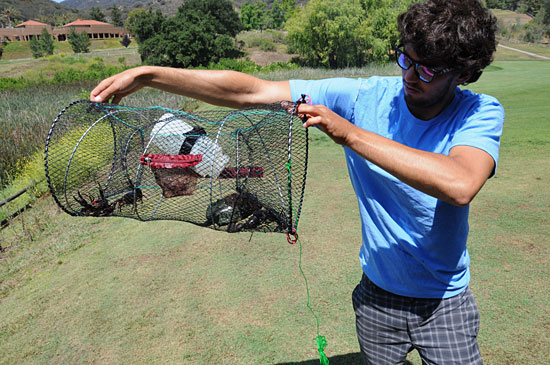
The proposed plan calls for the removal from streams of invasive species, such as non-native crayfish, seen here sharing a net with a Western pond turtle.
Posted 8/21/14
A force of our best nature
August 21, 2014
Cynthia Langley is no quitter. Lives depend on that.
A social worker for more than three decades, Langley fights chronic homelessness one weary soul at a time, spending day and night trying to persuade the most entrenched residents of the street to give housing a chance. She’s never welcomed with open arms. But in the end, she receives enough hugs of gratitude to keep her spirits strong.
“Someone has got to reach out to these individuals. They’re somebody’s son, somebody’s brother, somebody’s cousin, somebody’s loved one,” says the 58-year-old Langley, herself a grandmother of four. “And I’m stubborn enough not to take no for an answer.”
Earlier this year, I called upon Langley’s employer, the miracle-working Step Up on Second, for help on a case that would take every ounce of her stubbornness and devotion.
For more than a decade, a homeless man had taken over a bus shelter on Beverly Boulevard at Gardner Street near the Fairfax area. Over the years, he’d amassed a rising mountain of boxes and bags. The situation was no longer acceptable—for him or the community.
I knew that if anyone could get him off the street it was Step Up on Second, a Santa Monica-based nonprofit that provides permanent supportive housing to the most vulnerable of our homeless population. In fact, I’d recently allocated county funds to the organization to expand its outreach into the Beverly corridor, an area of increasing homelessness. Langley was brought aboard with that money and would soon come face-to-face with one her toughest challenges—a 64-year-old man who’d come to be called the “Professor.”
What happened during the next four months is both inspiring and instructive—a real-life look at what it actually takes to bring about the first steps in a long journey of recovery. It’s a remarkable story of skill, perseverance and trust, one with a happy beginning but no promise of a satisfying ending. That simply is the reality we face in trying to coax the homeless into homes, especially those who, like the Professor, are battling mental illnesses.
Langley says the first time she met the Professor at his bus stop, he was sitting, as usual, with his back to the street, keeping an eye on his belongings piled high behind the shelter. It was a chilly morning and he was wearing a big brown coat. “He turned around slowly with an angry, suspicious look,” she recalls. After Langley explained why she was there, the Professor said flatly: “I’m not interested.”
“Would you mind if I came back?” Langley asked. He turned his back on her. But she returned anyway, day after day, always deferential. “I know you’re busy,” Langley would say, “so what times work for you? What do you prefer?”
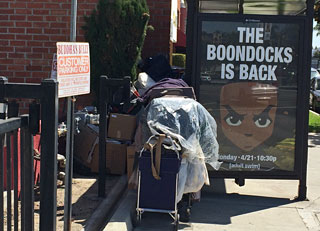
The Professor's belongings at Beverly Boulevard and Gardner Street, before he moved into his own apartment.
Soon, the facts of his life started slowly unspooling: He was born in Germany. He was physically abused by his father. He immigrated to the U.S. as a teen with his family. He went to UCLA and earned a bachelor’s degree in military science and a master’s in medieval history. He served in the Army. He never married. He even worked as
an adjunct professor at UCLA (hence the respectful nickname bestowed on him by Step Up on Second.)
Eventually, he began sharing with Langley the rituals of his daily life. He told her he’d spend hours at the neighborhood Starbucks. He’d clean up in the bathrooms at Pan Pacific Park, across the street from the bus shelter. Nice people would regularly bring him food and clothing. He’d been living this way, he said, for 14 years.
It also became clear to Langley and the team at Step Up on Second, including program director Dr. Michael Marx, that the Professor was distrustful and erratic. One day he’d be cooperative, the next combative, launching into diatribes and rants. He worried that the Starbucks was bugged.
Langley says she tried to stay mindful of the professor’s delicate mental state. She’d make sure to ask him, for example, whether it was all right for her to take a few notes as they spoke. That way, he wouldn’t think she was scribbling secret things about him to give to the government. Sometimes, he’d get racially provocative. “You’re African American,” he’d say to Langley, “what do you know?” But Langley would say calmly, without a hint of the irritation she felt: “Everyone has a right to their opinion.”
Always, she’d steer the conversation back to the primary objective.
“You’re just another one of those people who think they’re going to get me housed,” he’d say. “You’re right,” she’d answer. “I’m going to keep trying. I really do care about you and I’d like to see you living in a comfortable place. One day, I can imagine you housed. Can you imagine that?”
“No,” he’d respond. “I’m always going to live on the street.”
Still, he was continuing to open up. He eventually gave Langley a link to his past, a friend from his UCLA days with whom he’d once lived just a few miles away—the last home the Professor would know.
When Langley and Marx visited the friend, he said the Professor had been seriously hoarding and he had no choice but to ask him to leave, although they remained in contact. The friend, now in his 70s, also gave Langley and Marx an old datebook the Professor left behind, containing, among other things, his social security card, his honorable discharge from the Army in the 1980s and photos from years back.
Finally, in May, a breakthrough came when Langley and Marx asked the Professor if he’d like to see the Hollywood apartment that, just in case, had been reserved for him at a place called Michael’s Village. To the amazement and elation of the Step Up on Second team, he agreed to get in Langley’s car and go. When they walked inside, Marx took the lead.
“You’re a professor, can’t you imagine yourself sitting here writing?”
“Yes, I could,” the Professor responded. “This is for me?”
“This is your unit.”
“It’s too good to be true,” the Professor said.
“It is good, and it is true,” Marx assured him.
As Langley listened to the conversation, one thought kept going through her mind: “We got him.”
In the weeks ahead, there’d be more challenges to moving the Professor into his apartment. At one point, he changed his mind and vanished for a few days. But his old friend helped bring him back into the fold. He also suddenly became distrustful of Langley, who knew better than to personalize a snub rooted in mental illness. In fact, when it came time to sign the housing contract and other paperwork, Langley went so far as to duck under her desk so she wouldn’t agitate the Professor and send him back out the door.
The Professor finally moved into his unit at Michael’s Village earlier this month. Now, of course, comes the really hard part. Marathoners have a saying that the course is divided into two halves—the first 20 miles and the last 6, the most grueling stretch. That seems an apt description for the difficulties the Professor will confront as he tries to adjust to a roof over his head and neighbors all around him. He is no longer slipping through the cracks.
Fortunately, although he’s got a good distance to go, he’s finally on course—with a committed and compassionate team behind him, coaching him along the tough road ahead.
As for Langley, she’s already focusing her energies on a homeless man about a half-dozen blocks away at First and Detroit streets.
“I think we got him,” she says.
Posted 8/21/14
An even grander place to play
August 14, 2014
If you build it, they will play. At downtown’s Grand Park, that has been the lesson so far when it comes to kids’ amenities.
From the park’s big, cartwheel-friendly lawns to its spouting splash pool, the wildly popular 2-year-old gathering space has been jammed constantly with children. So far, though, it has lacked one of the most fundamental attractions—a place for children to slide, climb and swing.
That’s about to change. This week, the park broke ground on a 3,700-square-foot, $1 million play area that’s intended to make Grand Park even more of a kid magnet.
Designed with a fanciful forest theme by Rios Clementi Hale Studios, the park’s designers, the fenced play area will anchor the park segment known as Block Four, between Broadway and Spring Street, near City Hall and at the opposite end of the park from the splash pool and fountain.
“Grand Park strives to live up to its mission to be the ‘park for everyone’ in ways that engage, surprise and delight,” said Lucas Rivera, the park’s director. “Now with a children’s play area, we hope to exceed the expectations of even our smallest guests.”
The playground is expected to be completed by this November. That’s not a moment too soon for downtown’s residential community, which has become increasingly family-oriented and reliant on Grand Park for green space.
“I’ve been waiting for it,” said artist Lola Gayle, who was knitting in the park on Tuesday with her 9-year-old daughter, Milo Sandgren, as her 3½-year old son, Kian Sandgren, played in the water.
“How many years has Grand Park been open now? Let’s do it!”
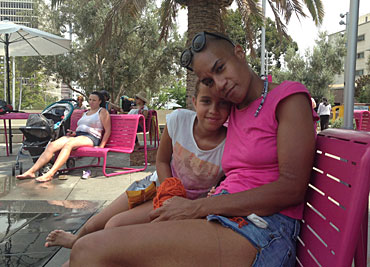
In foreground, Lola Gayle relaxes with daughter Milo. Alyssa Ochoa grabs a quiet moment on the bench at left.
Park officials said the play area was in the park plans from the beginning, but had been postponed because of limited funding.
The playground is being jointly funded by First 5 LA, which is providing a grant of $500,000, and by Supervisor Gloria Molina, who is matching that amount with Proposition A/Los Angeles County Regional Park and Open Space District money.
Aimed at children aged 12 and under, the play area will include a 20-foot-high hardwood tree house with platforms and roller and tube slides. The area also will have berms with rock-climbing handles, a rope climber and a tunnel, and curved hardwood benches for parents and caregivers. Mature sycamore trees will frame the space and provide shade.
Though the playground is expected to take up only a small portion of the 12-acre park’s lawns, its supporters predict a big payoff.
“Grand Park serves, in essence, as L.A.’s Central Park, and one big piece that has been missing is a children’s play area,” said Jennifer Pippard, interim director of First 5 LA’s community investments department.
“We want to be about promoting physical health and good mental health and social interaction, and play areas like this provide those kinds of opportunities.”
Artist Gayle said the play area will make life easier for the growing constituency of young families who have populated downtown Los Angeles in recent years. She said that when she moved in 12½ years ago with her husband, also an artist, families with children were few and far between. “It was just dog parks,” she recalled.
Now, she said, at least five families in her building have kids and Grand Park provides an essential downtown gathering place.
“It’s brilliant, it’s a sense of community,” Gayle said. “I’ve met some really cool moms here.”
The park clientele’s diversity—economic, social, racial and otherwise—also is a big draw, she added.
As Gayle spoke, the sound of families chattering—in English and in Spanish—filled the air, along with the universal language of squealing wet kids. Some parents had driven to get to the park, while others, like Alyssa Ochoa, arrived via public transportation.
Ochoa said she first heard about Grand Park when she was staying at the Union Rescue Mission with her daughter, Nylah Green.
At first glance, they were underwhelmed.
“There was no playground, so I was disappointed,” Ochoa said. Then 2-year-old Nylah discovered the splash pad, and the park became one of their favorite attractions.
They have since moved to a women’s shelter in South Central but, whenever they travel downtown to pick up some free diapers, they make it a point to drop by Grand Park as well.
“When you don’t have any money,” Ochoa said, “you have to find something that’s free.”
Posted 7/30/14
Rescuing youthful identities
August 14, 2014

L.A. County is working hard to repair the finances of foster kids whose credit has been abused by adults.
Minors are ineligible for credit cards and car loans in California. Yet there they were—the names and Social Security numbers of more than 100 Los Angeles County foster children on credit reports dating back years.
The discovery, part of a 2010 pilot survey on identity theft in the foster care system, was a wake-up call, recalls Rigoberto Reyes, chief of investigations for the county Department of Consumer Affairs, which helped conduct the survey.
Some of the most vulnerable children in the county were being exploited so duplicitous adults could obtain apartments, vehicles, jobs, cell phones, gym memberships, health care, even mortgages and bail money.
“In one case, a prostitute had gotten hold of the foster kid’s information and was using the kid’s name every time she was arrested,” Reyes says. “To clear it, we had to get the kid a letter from the Department of Justice’s identity theft registry.”
The study, launched in the wake of a 2006 state law aimed at curbing identity theft in the foster care system, has since grown in Los Angeles County into a protection effort unmatched anywhere else in the state.
Now, with a number of legal and procedural kinks worked out of the system, Consumer Affairs has formally teamed up with the county Department of Children and Family Services to add routine credit checks to the list of services the county performs for its foster children, scouring credit databases for children’s names and clearing them as needed.
“Identity theft is rampant when it comes to foster children,” says Sasha Stern, an attorney with the L.A-based Alliance for Children’s Rights, which provides free legal services to children in out-of-home care. “They move so much, and their personal information is transferred so many times that they’re just more vulnerable. So what the county is doing is great.”
Working through a secured web site with the credit bureau Experian, the two county departments this year have begun routinely checking and clearing the credit records of every foster child over 16 in the county system, quietly troubleshooting one of the most common—and pernicious—obstacles to the children as they age out of the system and attempt to start lives as independent adults. By November, the county also will begin working with the two remaining major credit bureaus, Equifax and TransUnion.
“Imagine trying to rent an apartment, or buy a used car, if you’ve been stuck with bad credit,” Reyes says. “And now imagine trying to do that if you’re a foster kid, dealing with all the worries foster kids have when they’re being emancipated.”
“Often these kids don’t find out there has been a fraud until they’re denied a student loan or a car loan,” adds DCFS Division Chief Harvey Kawasaki. “Or until an employment agency does a credit check on them as a prospective employee, and then decides not to hire them.”
Although California passed a law in 2006 aimed at clearing foster kids’ credit records, implementation has been slow because of procedural and funding woes. Most counties still do little more than crosscheck the names of their foster children with credit databases, leaving the children themselves to rectify any problems.
But L.A. County has its own in-house consumer affairs staff, as well as about half of the foster children in California. That, Reyes says, is why L.A. was chosen for the 2010 pilot, which checked the records of about 2,110 foster children.
In the last four years, Reyes says, the county has checked the credit of 8,126 foster children, finding that about 10 percent of them had open accounts under their names. That’s significantly higher than the prevalence of identity theft among adults in the general population, which is about 7 percent, according to a 2012 federal study.
“It’s not a lot of kids, but those who do have problems have multiple, multiple problems,” Reyes says.
The fraudulent accounts seemed more likely to be opened by relatives or acquaintances of the children than by their foster families, Reyes says, and most involved credit cards, utilities or medical care. “For example,” he says, “we had one where the sister delivered a baby in the emergency room and used the foster kid’s ID because she didn’t have insurance, and our kid got hit for the bill.”
Some cases also point to lax quality control among lenders. One recent survey of names, for instance, turned up more than 50 credit card accounts that had been opened at one major bank under foster kids’ identities, presumably with social security numbers that would have identified them as minors.
So far, no fraud has been prosecuted through the program. This is partly because the checks until now have involved thousands of names at a time, with an emphasis on clearing up the credit records, as opposed to punishing wrongdoers. But abuses are expected to get more scrutiny as caseloads lessen.
Under the formalized system underway this summer, the names and Social Security numbers of each foster youth will be compared twice with the credit bureaus’ records—once right after the children turn 16, and again, shortly before they turn 18. Consumer Affairs will then clear up any problems.
“About 175 of our foster kids turn 16 every month,” Reyes says. “So even assuming that 10 percent have problems, that’s fairly manageable.”
Even so, he warns, separating fraud from human error isn’t easy. Sometimes the record is as simple as confusing a son’s name with a father’s, or clearing up a credit bureau’s mistake.
In the case in which a $217,000 mortgage was found on a foster child’s credit record, for instance, investigators couldn’t determine whether the loan had deliberately been taken out under the youth’s name or whether the credit bureau had simply erred.
One of the biggest hurdles authorities face, Reyes says, is the reluctance of foster children to press charges against their betrayers.
“We had one where the father was using the kid’s information, and when the city attorney sat down with the kid and told him the process, he stopped returning our phone calls—he didn’t want to confront the father. He was afraid of the guy.
“That vulnerability is one of the hardest things about these cases, but also why they’re so important to resolve.”
Posted 8/14/14




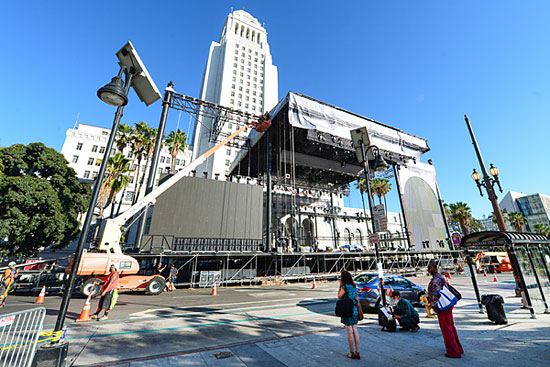

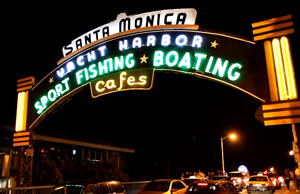

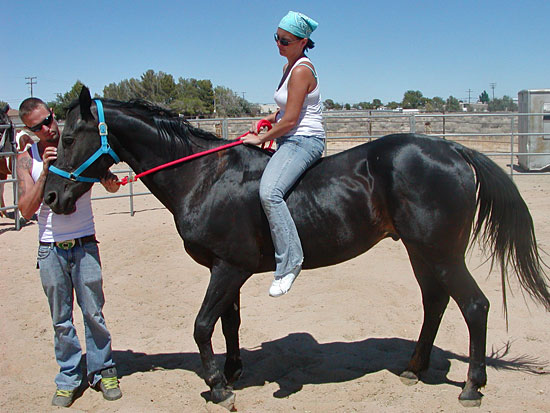
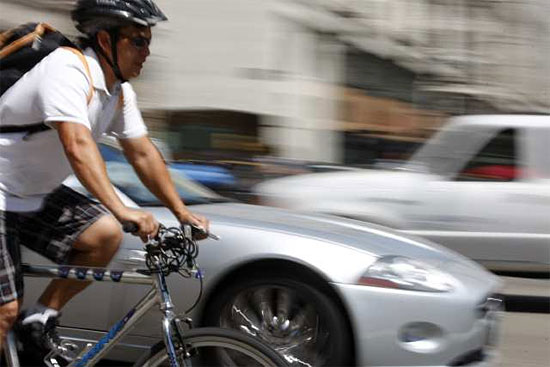
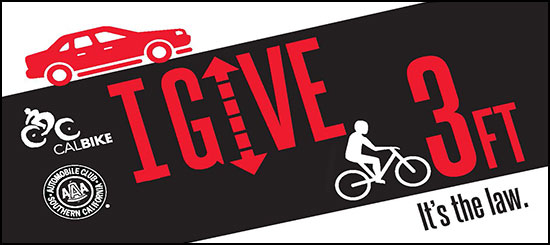
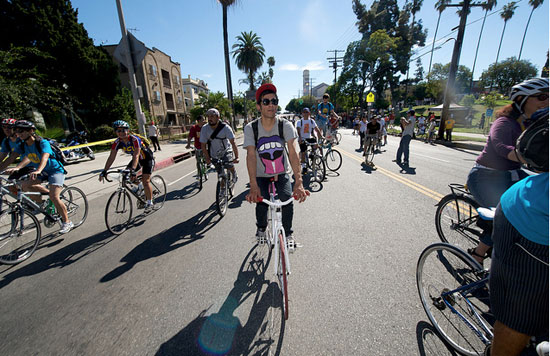
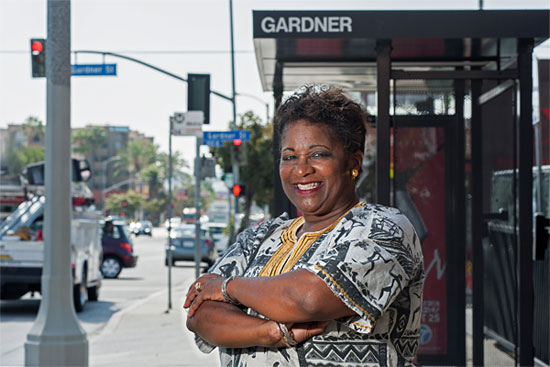
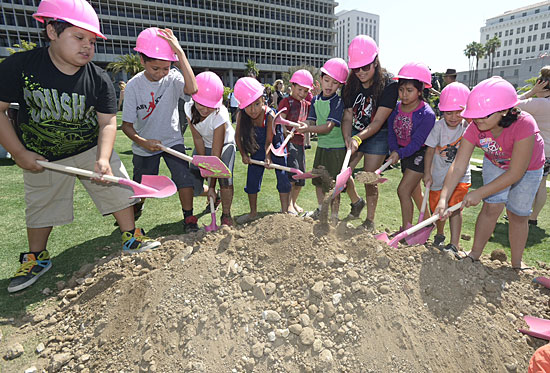

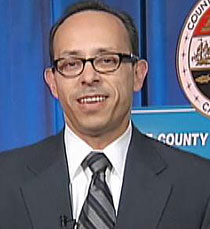





 Check for the latest closure information
Check for the latest closure information








